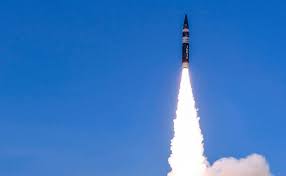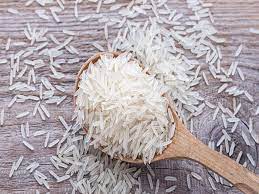Today Current Affairs: 25th October 2022 for UPSC IAS exams, State PSC exams, SSC CGL, State SSC, RRB, Railways, Banking Exam & IBPS, etc
Table of Contents
Partial Solar Eclipse:

India and a few other places in the world will witness a partial solar eclipse on October 25, 2022.
- An eclipse happens when the moon while orbiting the Earth, comes in between the sun and the Earth, due to which the moon blocks the sun’s light from reaching the Earth, causing an eclipse of the sun or a solar eclipse.
- There are three types of eclipses.
- Total solar eclipse:
- This happens when the sun, moon and Earth are in a direct line. The dark silhouette of the Moon completely covers the intense bright light of the Sun. Only the much fainter solar corona is visible during a total eclipse which is known as a Totality.
- Partial solar eclipse:
- This happens when the sun, moon and Earth are not exactly lined up.
- The shadow of the moon appears on a small part of the sun.
- Annular solar eclipse:
- This happens when the moon is farthest from the Earth, which is why it seems smaller.
- In this type of an eclipse, the moon does not block the sun completely, but looks like a “dark disk on top of a larger sun-colored disk” forming a “ring of fire”.
- Total solar eclipse:
Agni Prime: New Generation Ballistic Missile

The Agni Prime new generation ballistic missile was successfully test fired off the coast of Odisha.
- The ‘Agni Prime’ is a two-stage canisterised solid-propellant missile with dual redundant navigation and guidance system.
- The nuclear-capable missile has been designed and developed by the Defence Research and Development Organisation (DRDO).
- The surface-to-surface ballistic missile has a range of 1000 to 2000 km.
- The Agni Prime missile, the smallest and lightest among the entire Agni series of ballistic missiles.
- It weighs 50 per cent less than the Agni 3 missile and has new guidance and propulsion systems.
- In addition, since it is canisterised, it can be launched from rail or road, be stored for longer periods and can be transported as per operational requirements.
Pradhan Mantri Bhartiya Janaushadhi Pariyojana:

According to the Union Health Minister Pradhan Mantri Bhartiya Janaushadhi Pariyojana has significantly reduced patients’ out-of-pocket expenditure.
- Jan Aushadhi Scheme was launched by the Department of Pharmaceuticals in 2008 across the country.
- In 2015, the Jan Aushadhi Scheme was revamped as Pradhan Mantri Jan Aushadhi Yojana (PMJAY).
- In 2016, it was again renamed as Pradhan Mantri Bhartiya Janaushadhi Pariyojana (PMBJP).
Objective:
- To make available quality medicines, consumables and surgical items at affordable prices for all and reduce out of pocket expenditure of consumers/patients.
- To popularize generic medicines among the masses and eliminate the notion that low priced generic medicines are of inferior quality or are less effective.
- Generate employment by engaging individual entrepreneurs in the opening of JanaushadhiKendras.
Implementing Agency:
- Pharmaceuticals & Medical Devices Bureau of India (PMBI) is the implementing agency of Pradhan Mantri Bhartiya Janaushadhi Pariyojana (PMBJP).
- PMBI was established in December, 2008 under the Department of Pharmaceuticals, Government of India.
LVM3-M2 : ISRO

Indian Space Research Organisation (ISRO)’s heaviest rocket LVM3-M2 lifts-off from a launch pad at the Satish Dhawan Space Centre, in Sriharikota, recently. The rocket successfully placed 36 broadband communication satellites of OneWeb, on ISRO’s maiden commercial mission.
- This mission is being undertaken as part of the commercial arrangement between New Space India Limited (NSIL) and m/s Network Access Associates Limited (m/s OneWeb Ltd), a U.K. based company.
- OneWeb is a joint venture between India’s Bharti Enterprises and the U.K. government.
- This is OneWeb’s 14th launch, bringing the constellation to 462 satellites. This launch represents more than 70% of its planned 648 Low Earth Orbit (LEO) satellite fleet that will deliver high-speed, low-latency connectivity worldwide.
- The 43.5 metre LVM3 weighing around 644 tonne carried 36 satellites weighing 5,796 kg or about 5.7 tonne.
Launch Vehicle Mark III (LVM3) -M2:
- The Indian Space Research Organisation (ISRO) has renamed the Geosynchronous Satellite Launch Vehicle (GSLV) Mark -III as Launch Vehicle Mark-III, mainly to identify its task of placing satellites into a variety of orbits.
- Launch Vehicle Mark III (LVM3) -M2 is the dedicated commercial satellite mission of New Space India Limited (NSIL), a Central Public Sector Enterprise (CPSE) under the Department of Space, Government of India.
- The LVM3 rocket (earlier called the Geosynchronous Launch Vehicle Mark III or GSLV-MK3) can carry up to 8 tonnes into low earth orbit (LEO-up to 1,200 km above the Earth).
- The rocket is a three-stage launch vehicle consisting of two solid propellant S200 strap-ons on its sides and core stage comprising L110 liquid stage and C25 cryogenic stage.
- The PSLV is much lighter and can carry between 1.4 and 1.75-tonne payloads.
Sandalwood Spike Disease (SSD):

Sandalwood spike disease (SSD) has recently started spreading to private fields where the cultivation of sandalwood has been taken up on a commercial basis.
- It is caused by phytoplasma — bacterial parasites of plant tissues — which are transmitted by insect vectors.
- The disease was first reported in Kodagu in 1899.
- It is being classified as “vulnerable” by the International Union for Conservation of Nature in 1998.
- Presently, there is no option but to cut down and remove the infected tree to prevent the spread of the disease.
- Between 1 and 5% of sandalwood trees lost every year due to the disease.
- SSD has been one of the major causes for the decline in sandalwood production in the country for over a century.
Bhoota Kola:

The recent Kannada movie Kantara opens up a controversy relates to the origins of Bhoota Kola, an annual ritual performance where local spirits or deities are worshipped.
- Bhoota Kola is an annual ritual performance where local spirits or deities are worshipped.
- It is believed that a person performing the ritual has temporarily become a god himself.
- This performer is both feared and respected in the community and is believed to give answers to people’s problems, on behalf of the god.
- There are several ‘Bhootas’ who are worshipped in the Tulu-speaking belt of Dakshina Kannada, Uttara Kannada and Udupi districts of Karnataka.
- It is usually performed in small local communities and rural areas.
New Basmati Varieties:

Five new Basmati varieties, developed by a group of scientists from Indian Agriculture Research Institute (IARI), in 2020 and 2021 will bring changes in the way paddy is cultivated in the country.
- Three of the five varieties can resist two common diseases of paddy.
- Bacterial leaf blight (BLB) and blast (leaf and collar) diseases caused by the fungus Magnaporthe oryzae.
- New varieties are
- Pusa Basmati 1847,
- Pusa Basmati 1885 and
- Pusa Basmati 1886.
- All these varieties have two genes to resist BLB and two genes to resist blast disease.
- The other two can save 35% of the water now required as the seeds can be directly sown, obviating the need for transplanting seedlings.
- These two seeds are resistant to herbicides too, helping the farmers control weeds more efficiently.
- In the next three years, all of the five seeds will have the combined qualities of disease and herbicide resistance.
- India is known for its Basmati rice, with the produce from seven States — Jammu and Kashmir, Himachal Pradesh, Punjab, Haryana, Delhi, Uttar Pradesh and Uttarakhand — earmarked for Geographical Indication.
- Basmati, known for its mouthfeel, aroma, length of the grain when cooked and taste, has a market abroad and brings about ₹30,000 crore in foreign exchange every year.
- While 75% of the export is to West Asian countries, European Union countries also import Indian Basmati.




